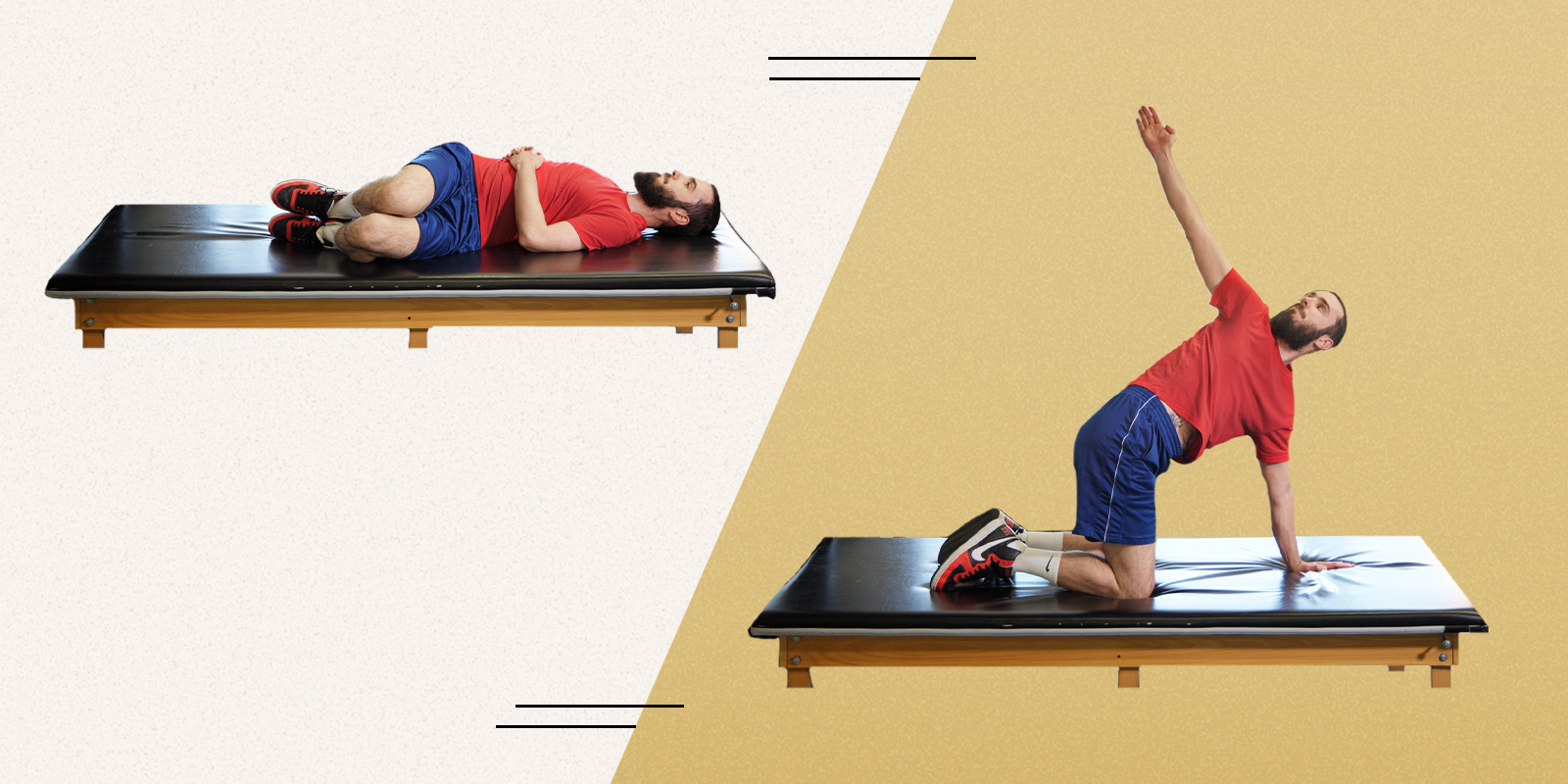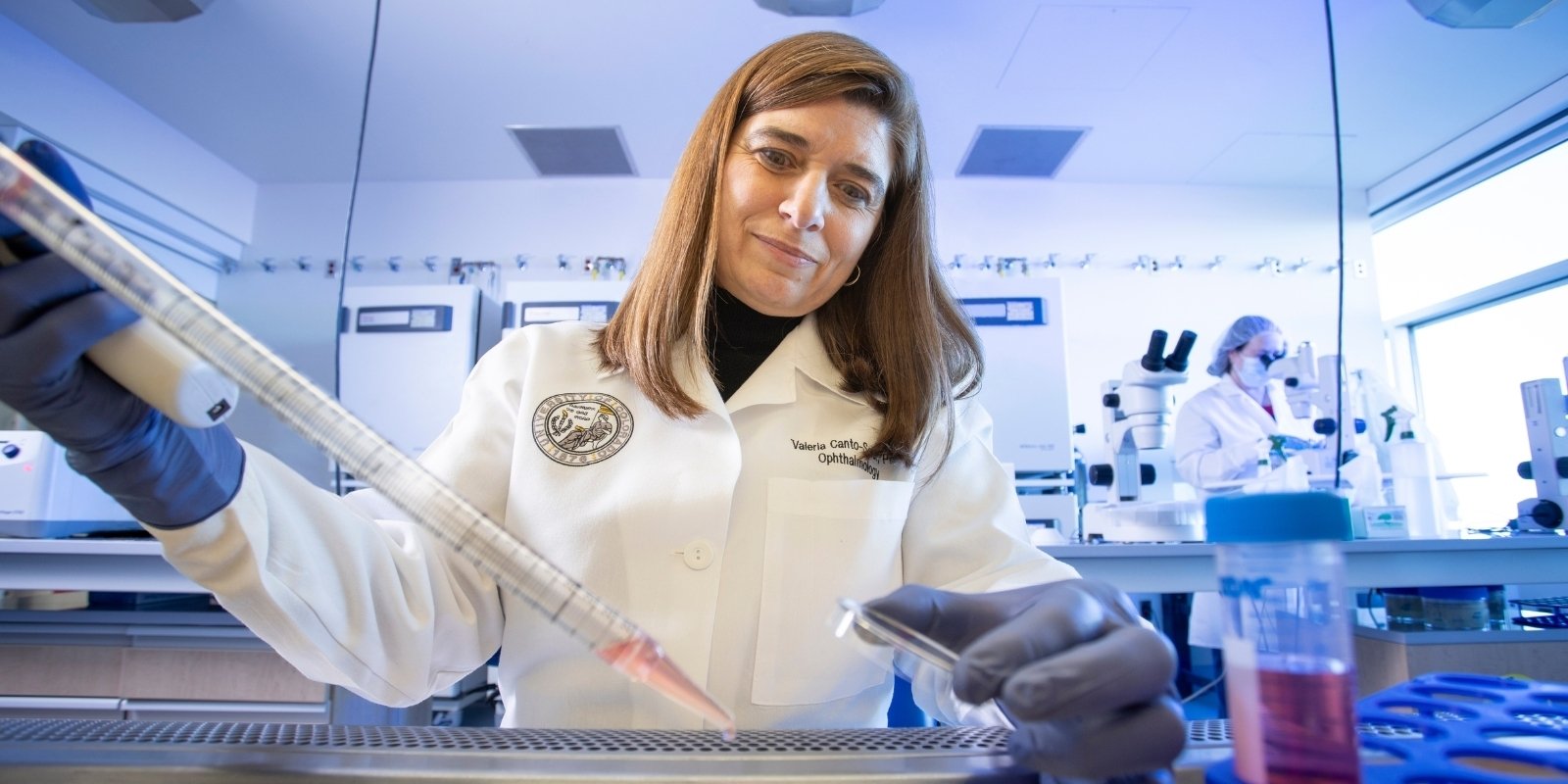After hearing the phrase “dead in bed,” restful nights for Marc Bullion and his wife, Becki, disappeared. Their daughter, Lelia, was diagnosed with type 1 diabetes (T1D) at age 8, and her low-blood sugar episodes were unusually frequent.
Each night, the Brighton couple took turns sneaking into their little girl’s room, pricking her finger while trying not to wake her. Often, her blood sugar was low, adding more hours of treating, monitoring and worrying.
“We would never sleep. It was like having an infant again,” Bullion said.
Today, insulin pumps and continuous glucose monitors (CGMs) help eliminate unknown dangerous drops or spikes in blood sugar, which play a role in the real but extremely rare “dead-in-bed syndrome.”
But the Bullions wanted more peace of mind. They found it – in a big, fluffy furball named Gizmo.
Getting a life-changing diagnosis
Gizmo, an 80-pound, cream-colored golden retriever, hovers near Lelia Bullion, now 17, as she shares her story around the kitchen table in her family’s suburban home. While happily hanging out with his other canine housemates, Gizmo keeps his eyes and nose on his special human, an athletic high-school junior.
Days after her eighth birthday, Lelia went to the emergency room for symptoms of what her family had thought was the flu. But weight loss, thirst and excessive urination (on top of fever, nausea and vomiting) tipped off her mother, who is a nurse.
“They checked my blood sugar, and it was 688, which was crazy high,” Lelia said (normal range is below 140 mg/dL). Insulin shots lowered her blood sugar and relieved her symptoms. But her family went home with a life-changing diagnosis.
With T1D, a person’s pancreas makes little or no insulin, a hormone needed for the transport of glucose from the blood into the cells for life-sustaining energy.
The next day, the family spent 10 hours at the Barbara Davis Center for Diabetes (BDC) at the University of Colorado Anschutz Medical Campus learning about the disease and the care it involved.
“They were so comforting,” Lelia said. “They said: Everything is going to be OK. It’s going to be a long process to get used to, but we’re going to help you. We’re going to be here for you.”
Fulfilling mission No. 1: bonding
When Lelia’s mom heard about Alert Service Dogs for Kids, a program through the Foothills Kiwanis Club in Boulder, the family researched the program and diabetic alert dogs. The dog-loving family decided a four-legged helper was what they needed.
“I was overwhelmed, but kind of in a good way,” Lelia said of the first time she held her new, 8-week-old pup, which she promptly named Gizmo. “I was like: Wow, I have a service dog now, and I have so much to take care of.”

For the first few months, Lelia and Gizmo’s only mission was to bond. Since Gizmo would serve such an important role for her, Lelia had to establish the “alpha” status with him and take the lead as care provider.
With guidance from the service-dog program, Lelia, then 11, fed, walked, groomed, cared for and loved Gizmo.
While some service-dog organizations train the pups and then deliver them to their new handlers, others consider the early bonding time crucial to training.
Kerri Rodriguez, PhD, a postdoctoral research fellow with the Human-Animal Bond in Colorado program at Colorado State University, studies the bonding aspect between handlers and diabetic, seizure and mobility service dogs.
“The alerting (related to canines’ sensitive noses) is also corresponding with the bond,” Rodriguez said. Basically, as the handler and dog get to know each other, they pick up on the other’s dyadic responses, she said. “The alerts are more effective and stronger as the bond gets stronger.”
Mission No. 2: training the nose
Once the bond was solid, Gizmo and Lelia began training.
Multiple times a day, Lelia would give Gizmo a “watch me” command and then prick her finger and measure her blood sugar under the pup’s curious gaze. “He was focused. If my blood sugar was low or high, I’d have him smell (and lick) the blood on my finger.”
If her level was off, Lelia would ask Gizmo to speak,” Marc Bullion said. “Then treat, praise and love,” he said, hitting on a critical component of dog training.
When Gizmo napped, the family would hide baby-food jars from the freezer around the house. Tucked inside the jars were positive test strips and gauze spotted with blood or rubbed under Lelia’s armpit for a serious game of hide-and seek.
“You’d see his nose perk up,” Marc Bullion said. “He’d start looking. As he progressed, he would smell it and start to bark.”

Little Gizmo gets a lesson in blood sugar.
Sense of smell plays a role in detection, as canines have long served as detection dogs for everything from narcotics to explosives. Today, dogs are trained to detect disease, from multiple cancers to COVID-19.
The general hypothesis is that canines’ noses (able to detect at concentrations of one part per trillion) pick up on changes in volatile organic compounds (VOC) emitted by the body through, for example, blood, sweat and urine.
Many questions remain in the emerging area, and more research needs to be done, Rodriguez said. “But research so far has been extremely promising. Our research definitely suggests that these dogs are having a very meaningful impact on these people’s lives.”
Taking the pressure off the family
Gizmo’s first alert came about four months into training, Lelia said. “He was consistent at about six to eight months with me.”
Lelia has always had more glucose lows than average, partly because of her athletic lifestyle. A gymnast since age 3, and now in track and volleyball, rigorous practicing and conditioning burns through her sugar stores, she said.
She also has “hypoglycemia unawareness,” meaning she often has no signs of low blood sugar. But Gizmo knows, often alerting when her levels are just starting to trend down, allowing her to reverse it before the drop becomes critical, causing diabetic coma or seizures.
Taking the pressure off the family at night has been the biggest benefit, they said. Gizmo first tries to awaken Lelia by barking and licking her face when he senses trouble. But she’s a heavy sleeper.
If he can’t wake Lelia, Gizmo races to her parents’ room. “He will jump on the bed,” her dad said. “Or he’ll put his head under the covers and grab my arm and pull me, so I immediately know something’s wrong.”
Drawbacks cited by surveyed service-dog owners:
- Lack of public education. Especially for individuals with invisible disabilities, such as diabetes and epilepsy, uneducated people sometimes accuse them of deception – “that’s not a real service dog” – and deny them access.
- Service dog care. As for any pet owner, taking care of their furry companion requires time and work. For people with a disability, it can add significant stress for themselves and their family members – groups already at high risk for stress, anxiety and depression.
- Financial burden. Food, grooming, time and vet bills can take a toll on sometimes already-strapped budgets.
Source: Kerri Rodriguez, PhD, et al., “Mobility and medical service dogs: a qualitative analysis of expectations and experiences.”
When a daytime blood-sugar drop leaves Lelia shaky, weak and confused, she’ll say: “‘Go get help,’ and he’ll bark profusely and just get somebody’s help. He’ll find the nearest person – whether it’s my brother, my mom, my dad ... a friend – to come and attend to me.”
Rodriguez’s studies on medical alert service dogs also looked at their benefits for family members, especially parents. “We found that having a service dog in the home was associated with less health-related worry for other household members, including better overall psychosocial health and emotional functioning with less total family impact from the chronic condition.”
Finding ‘incredible peace of mind’
Gizmo watches Lelia nearly 24/7, in class, at restaurants, at Avalanche games, on the volleyball sidelines – he’s at her side everywhere she goes. “He’s an extension of her,” her dad said. “He is her pancreas in that sense,” he said of Gizmo, who has a photo next to Lelia’s in the school yearbook and will walk the graduation stage in cap and gown with her next year.
Rodriguez’s research found that having a mobility or medical alert service dog was associated with better social, emotional, work and school functioning. The findings are especially important for people with invisible disabilities, which can be socially isolating and lead to anxiety, depression and low self-esteem, she said.
Lelia, who was inspired by the care she received at the Barbara Davis Center, is considering a nursing career in pediatric endocrinology. At BDC, many of her caregivers had diabetes themselves, which she found extremely comforting, she said. She’d like to return that feeling for newly diagnosed children and families someday.
Lelia knows Gizmo doesn’t replace her medical care and self-monitoring and advises that alert dogs aren’t foolproof and might not be for everyone. “When we got him, the organization said: He’s never going to be 100% accurate,” she said of Gizmo, guessing he is probably between 85% and 90% accurate.
She advises people to research alert dogs and providers before they choose and understand the huge responsibility they are taking on. “They also need to be consistent with their diabetic care before trying to care for something else,” she said.
But for the Bullions, they couldn’t be happier. “He’s incredible. And we started getting at least a full six hours of sleep at night when we got Gizmo,” she said, drawing a laugh from her father. “He gave us incredible peace of mind. He’s my best friend.”
“They also need to be consistent with their diabetic care before trying to care for something else.” – Lelia Bullion on patients considering diabetic alert dogs



